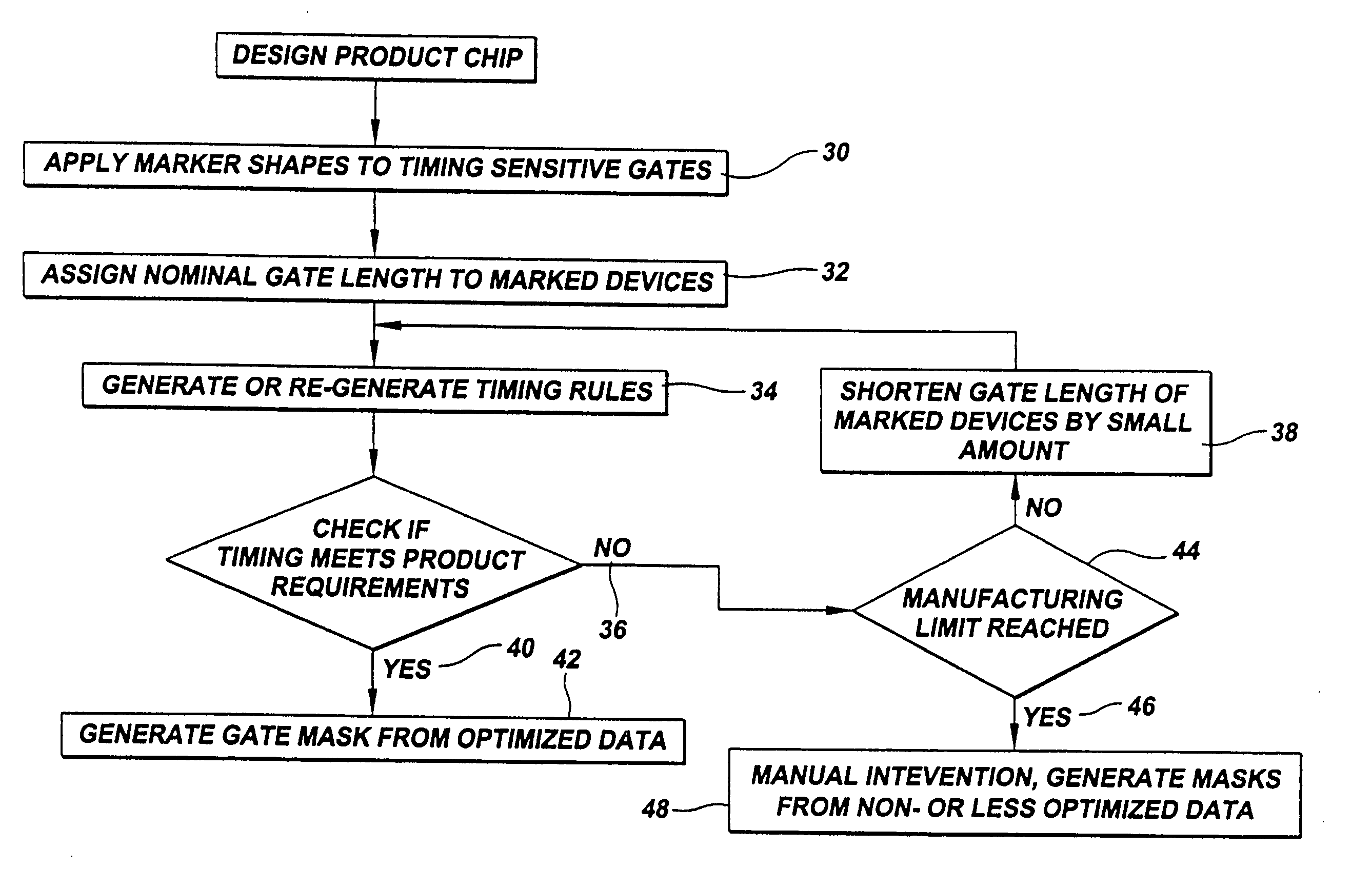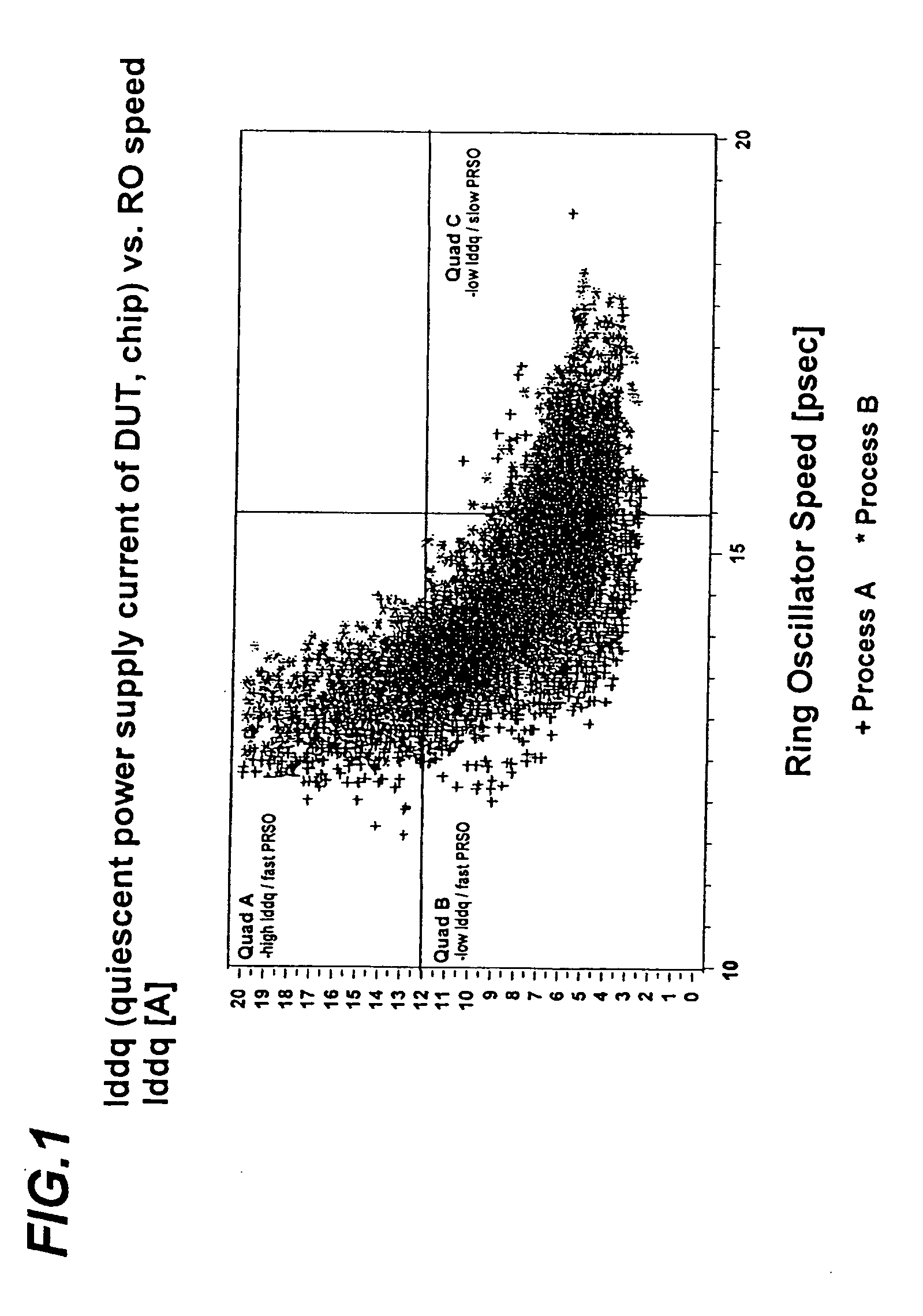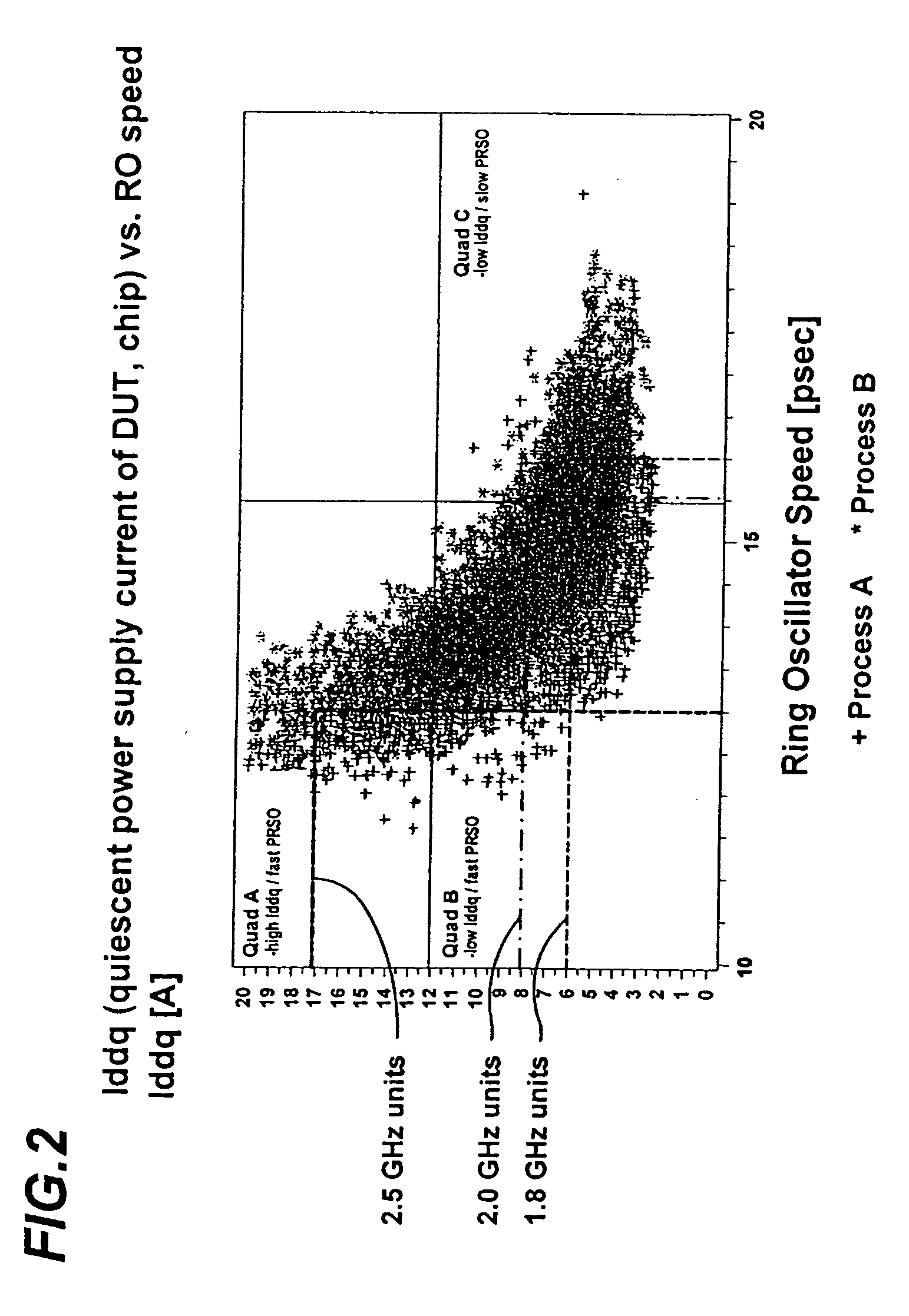Opc trimming for performance
a technology of opc and performance, applied in the field of semiconductor wafer processing, can solve the problems of inability to meet the needs of overexposure or reactive ion etch gate trimming, inability to reduce the amount of steps, and increase the current of off-state. the effect of performance and timing
- Summary
- Abstract
- Description
- Claims
- Application Information
AI Technical Summary
Benefits of technology
Problems solved by technology
Method used
Image
Examples
first embodiment
[0029] In a first embodiment, the present invention introduces a methodology for shortening L-poly, or trimming the gate lengths, for the devices in the critical path. This enables the transistors to switch ON at an earlier stage, and effectively lowers the device threshold voltage. The threshold voltage defines where each device approaches the conducting regime. If the threshold voltage is indeed lower, the transistor switches ON at an earlier time. For example, in an inverter stage, the inversion of the signal would be performed at an earlier time.
[0030] Shorting the L-poly of selected devices in the critical path makes each transistor switch faster. However, even though the switching speed is enhanced there remains the expected drawback, namely, with a lower threshold voltage, VT, comes an increase in leakage current for all the affected devices. In this manner, the devices that are not supposed to be conducting will generally leak more current, which cumulatively adds and yields...
second embodiment
[0036] In a second embodiment, the RC time constants of devices in the time-sensitive critical path are adjusted, directly altering the switching times for the critical devices. The iterative methodology employed to shorten the L-poly using OPC trimming may also be applied to adjust metal lines that form resistive paths, and to adjust the parasitic capacitance coupling among device neighbors.
[0037]FIG. 4 depicts the process flow of the methodology of the present invention for design a product chip for Front End-of-Line (FEOL) processing using the OPC trimming technique of the present invention. First, marker shapes are analytically applied to timing sensitive gates and BEOL paths 50. Normally, BEOL begins as the first contact for all metallization layers. BEOL suffers from RC delay due to long line lengths and next-neighbors. The resistance (R) may be improved by making the metallization line wider; however, this creates capacitive (C) issues. Nominal gate lengths are assigned to th...
PUM
 Login to View More
Login to View More Abstract
Description
Claims
Application Information
 Login to View More
Login to View More - R&D
- Intellectual Property
- Life Sciences
- Materials
- Tech Scout
- Unparalleled Data Quality
- Higher Quality Content
- 60% Fewer Hallucinations
Browse by: Latest US Patents, China's latest patents, Technical Efficacy Thesaurus, Application Domain, Technology Topic, Popular Technical Reports.
© 2025 PatSnap. All rights reserved.Legal|Privacy policy|Modern Slavery Act Transparency Statement|Sitemap|About US| Contact US: help@patsnap.com



